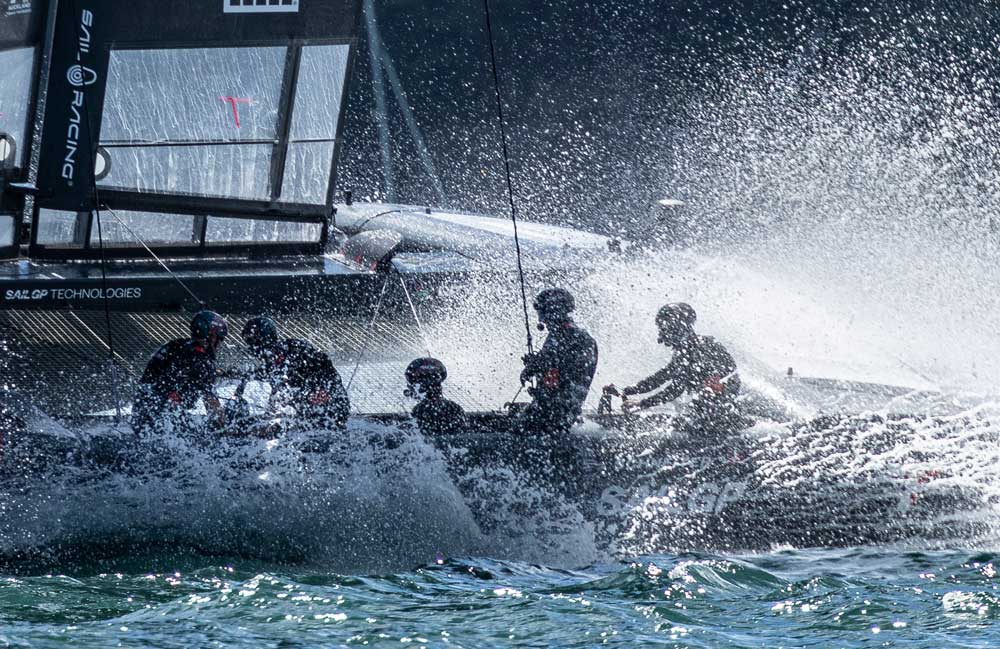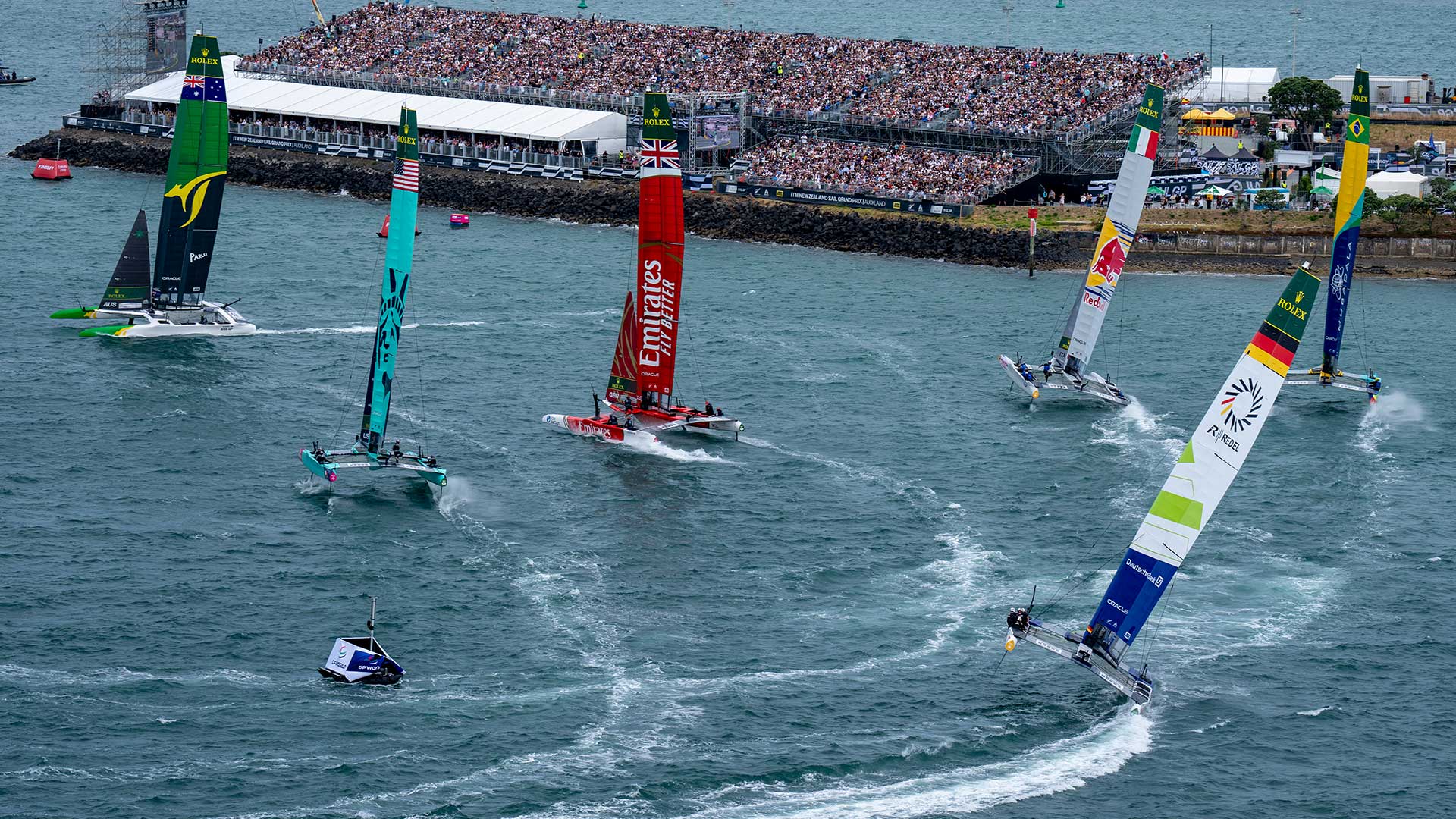Auckland SailGP – The Recap
The stage was set for some serious high-speed sailing on Waitematā Harbour at the SailGP Auckland event on January 18-19, 2025, and the competitors did not disappoint. Unfortunately for the home crowd, it was the Australians that dominated. Day One saw them finish 5th, 1st, 2nd, and 2nd in the fleet races, landing them at the top of the leaderboard with 34 points—six ahead of Great Britain, who spent most of the day playing catch-up. But hey, a win’s a win, right?
Then came Day Two. The final race was a showdown between Australia, Spain, and Great Britain. With speeds hitting 90 km/h, Australia crossed the finish line first, locking in the win (and probably a few smug grins). Spain rolled in second, and Great Britain followed in third. It wasn’t exactly a nail-biting photo finish, but hey, they got the job done.
Australia’s win in Auckland puts them in the driver’s seat for the season, but things can turn sideways really fast in SailGP. For anyone who hasn’t been paying attention, SailGP is high-octane, no-nonsense, international sailing at its finest. The league features 12 teams from sailing powerhouses like Australia, Great Britain, New Zealand, and the USA, all racing on futuristic F50 catamarans that can hit speeds of over 100 km/h. Think Formula 1, but on water.
The circuit spans some of the most stunning locations in the world, with upcoming stops in San Francisco, Singapore, and Bermuda. Each event is a mix of fleet races and match racing, with teams fighting to prove who’s the fastest, smartest, and most consistent.

SailGP Fast Facts
F50s Generate More Power Than a Formula 1 Car
The rigid wing sail functions similarly to an aircraft wing, creating a high power-to-weight ratio that enables rapid acceleration and exceptional efficiency.
Hydrofoils Reduce Drag by 95%
Once speeds reach approximately 15-18 km/h, the L-shaped carbon fibre foils lift the hulls completely out of the water, significantly reducing drag and allowing speeds in excess of 100 km/h.
Fly-by-Wire Control System
Unlike conventional sailing yachts, the F50s use an advanced hydraulic and electronic control system, allowing sailors to adjust the sails and foils instantly via buttons on the wheel.
Pedal-Powered Hydraulics for Greater Efficiency
Some teams employ “cyclors” (crew members using leg power instead of traditional hand grinding) to generate hydraulic pressure, improving endurance and power output.
Unparalleled Speed-to-Length Ratio
With a ratio of 4.5:1, the F50 is one of the fastest sailing vessels relative to its size, surpassing even America’s Cup yachts, which typically have a ratio of around 3:1.
AI-Assisted Flight Control
Onboard artificial intelligence processes real-time sensor data to assist the flight controller in maintaining stable foiling by automatically adjusting foil positions and angles.
Millimetre-Precise Wing Sail Adjustments
Even the smallest alterations to the wing sail’s flaps can optimise airflow, lift, and stability, maximising speed and efficiency.
Crews Endure Forces of Up to 4G
During high-speed manoeuvres, sailors experience forces similar to those encountered by fighter pilots, necessitating exceptional physical conditioning.
Rudders Incorporate Winglets for Stability
Much like the wingtips on an aircraft, these additions minimise drag and enhance control at high speeds, contributing to smoother and more predictable handling.
Sustainable Energy Integration
The F50s use solar-powered batteries to operate onboard electronics, while support boats incorporate hydrogen fuel cell technology to reduce environmental impact.

